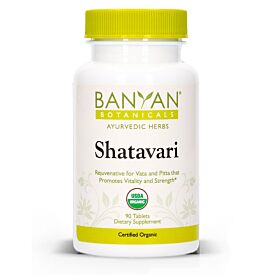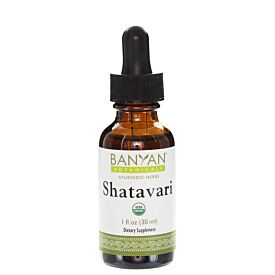Ayurvedic Herbs: Shatavari
/Ayurvedic Herbs
Ayurvedic herbs are one of the many chikitsas or treatments used in Ayurvedic medicine. These herbs are used as part of an herbal protocol recommended by an Ayurvedic professional. Thusly, all the Ayurvedic herbs should not be self-administered and Ayurvedic herbs should only be taken under-advisement of your Ayurvedic Counselor/Practitioner/Doctor and approved by your Primary Care Physician. The information on the Ayurvedic herb of Shatavari is only meant to educate you on the ways in which it is traditionally used in Ayurveda and is presented for educational purposes only. It is not intended as a substitute for the diagnosis, treatment, or advice of a qualified, licensed medical professional. The facts presented are offered as information only, not medical advice, and in no way should anyone infer that we are practicing medicine. Seek the advice of a medical professional for proper application of this material to any specific situation. Do not use the information found within this post to self-diagnose any medical conditions or treat any health problems or diseases. The information provided is not intended to prescribe or be taken as medical advice. If you have or suspect that you have a medical condition please contact your health care provider immediately.
“The essence of all beings is Earth. The essence of Earth is Water. The essence of Water is plants. The essence of plants is the human being.
Esam bhutanam prthivi rasha, prthivya apo raso-pam osadhayo rasa, osadhinam puruso rasah.”
Shatavari
Latin Name: Asparagus racemosus
Plant Family: Liliaceae
English Name: Wild asparagus
Sanskrit Name: Shatavari means “who possesses a hundred husbands” or “one hundred roots” or “one hundred below”
Part Used: root
Botanical Description: it has thorns on its stalk and it grows upward; its branches are triangular and oily; the leaves are very small and there are 2-6 together in a bunch
Taste (Rasa): sweet, bitter
Energetics (Virya): cooling
Post-Digestive Effect (Vipaka): sweet
Quality (Guna): unctuous, heavy
Dosha: VP- K+ or Ama+ (in excess)
Tissues (Dhatu): all plasma (rasa), blood (rakta), muscle (mamsa), fat/adipose tissue (meda), bone (asthi), nerve/bone marrow (majja), reproductive tissue (shukra [male]/artava [female])
Systems (Srotamsi): circulatory (rakta vaha srotas), digestive (anna vaha srotas), reproductive (shukra/artava vaha srotas), respiratory (prana vaha srotas)
Constituents: alkaloids (asparagamine); steroidal glycosides and saponins (shatavarin, saraspogenin, diosgenin); mucilage
Actions: tonic (general, reproductive, nervine), nutritive, rejuvenative, demulcent, antacid
Ayurvedic Actions: gives strength (balya); aphrodisiac (vrsya), enhances sexual appetite (vajikarana); rejuevenative (rasayana); promotes menses (artavajanana); promotes fertility (vajikarana); prevents miscarriage (prajasthapana); increases ojas (ojovardhanam); nourishes breast milk (stanyajanana); nervine (medhya); diuretic (mutravirecana); promotes sperm production (sukrajanana); purifies sperm (sukrasodhana); alleviates bleeding from heat (raktapittaghna); benefits eyesight (caksusya); alleviates colic (sulaprasmana)
Biomedical Actions: demulcent, galactagogue, anti-inflammatory, aphrodisiac, female reproductive tonic, spermatogenic, antihaemorrhagic, expectorant, adaptogen, immunomodulator, antibacterial
Indications: gynecology, lactation, digestion, lungs, male fertility, urine, anabolic, nerves
Precautions: high Ama, excess mucus, acute lung congestion, high Kapha, low digestive fire
Preparations: decoction, milk decoction, powder, paste, medicated ghee, medicated oil
Formulations: siddhaghrita, phalghrita, narayan taila
Shatavari is a powerful Ayurvedic herb that cleanses and nourishes the blood and female reproductive system. It is beneficial for Vata and Pitta prakruti (constitution) and vikruti (imbalances). Shatavari has an affinity for the female reproductive system.
References
Frawley D. Yoga & Ayurveda: Self-Healing and Self-Realization. Twin Lakes, Wisconsin: Lotus Press; 1999.
Frawley D, Lad V. The Yoga of Herbs: An Ayurvedic Guide to Herbal Medicine. Twin Lakes, Wisconsin: Lotus Press; 2001.
Gogte VM. Ayurvedic Pharmacology & Therapeutic Uses of Medicinal Plants: Dravyagunavignyam. New Delhi, India: Chaukhambha Publications; 2016.
Pole S. Ayurvedic Medicine: The Principles of Traditional Practice. Philadelphia, PA: Singing Dragon; 2013.







